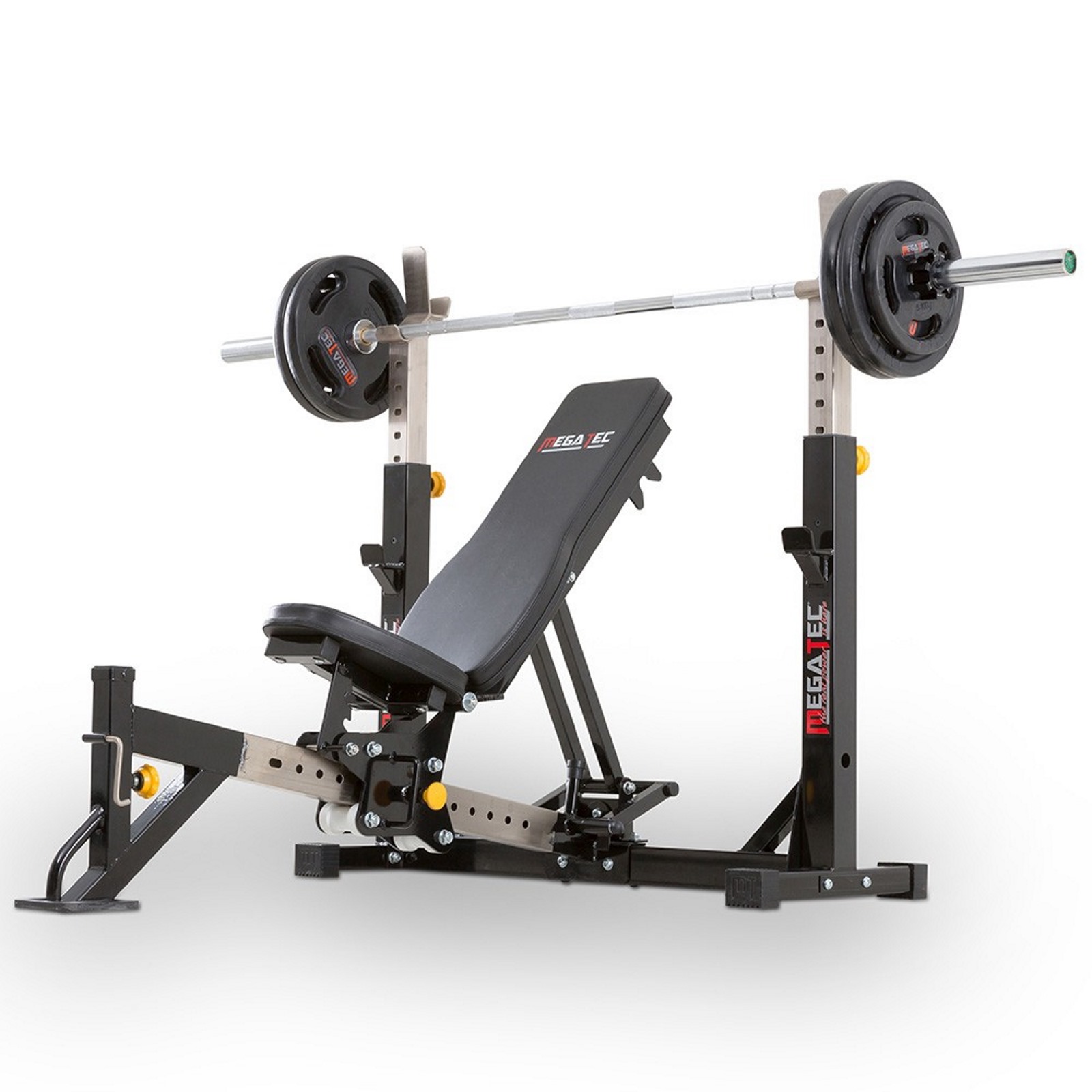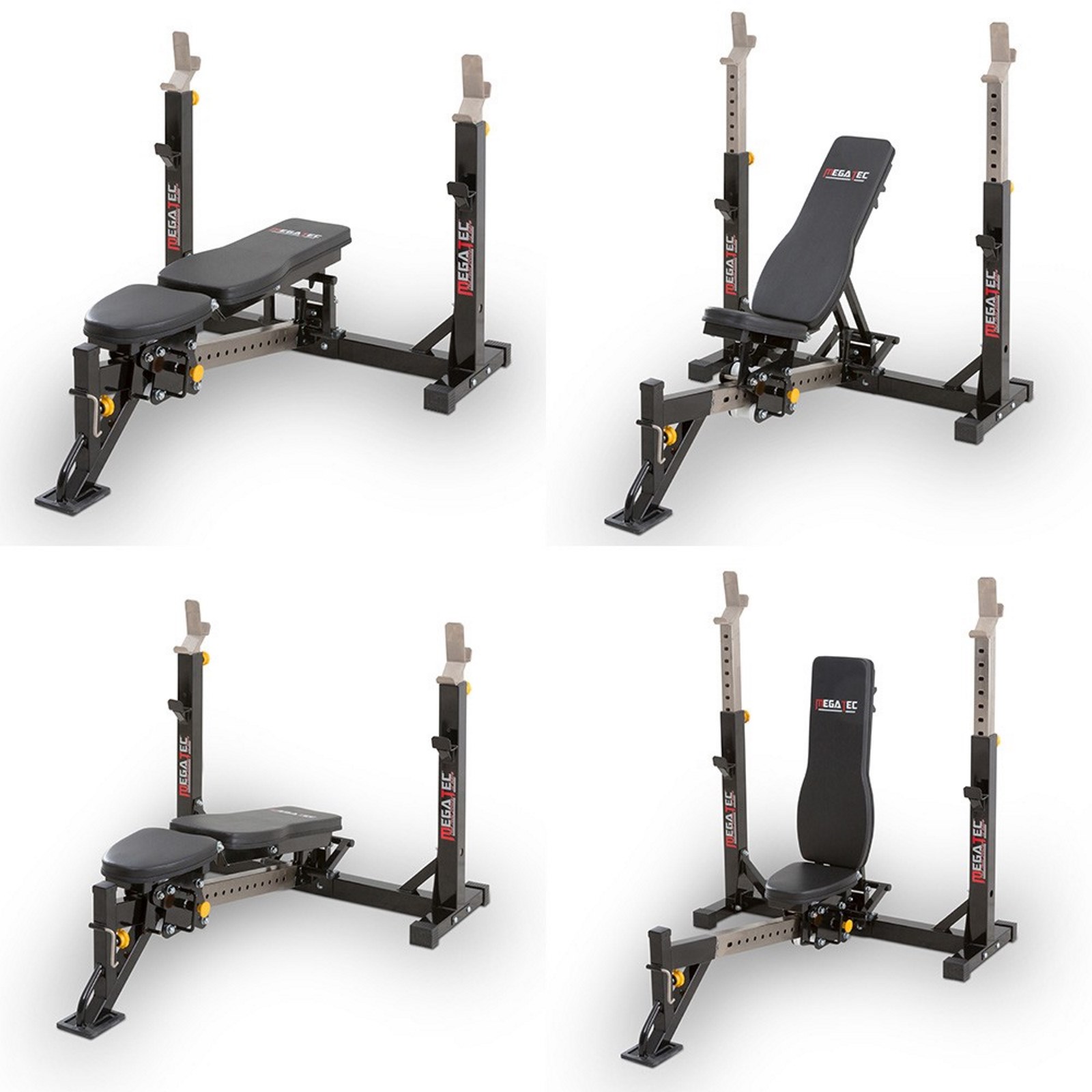Bench Press Buying Guide – Incline, Decline or Flat?
Gym equipment can be confusing. We see it all the time. A customer comes into the shop looking for something they believe is a relatively simple choice, like a bench press. Then they are confronted with several choices. Each option will have it’s pros and cons relative to each other. Their heads start spinning trying to work out which will work best for them.
For the inexperienced weight lifter, there are terms for variations of the bench press exercise – flat bench press, incline bench press and decline bench press. Then there are different types of gym equipment on which you can perform these exercises. There are dedicated bench presses for each variation listed above.
Or there are benches that can adjust the angle of the bench so you can perform each variation on the same bench. To make it even more complicated there are bench press machines where you can perform these exercises in leverage format in preference to using a barbell.
We really are spoilt by choice!
So here is some information to help you choose the right bench press bench.
The Basics
If you had to ask around at your local gym about which option is best – incline, decline or flat bench presses, you’ll probably get different answers from everyone. Even the top fitness professionals in the industry disagree about which ones you should be using.
This can be confusing and frustrating, and it won’t help you to make your decision about which one will be best for you. How are you supposed to make an informed decision about which option is best if everyone is giving you a different answer? How are you supposed to decide what works best if the professionals can’t even make up their own minds?
To make up your mind about this, you need to understand a bit more about how this gym equipment works and what it aims to achieve.
The bench press has been designed to focus on the chest muscles, which include the pectoralis major and the pectoralis minor. When you’re doing any sort of bench press exercise, you’ll not only be working out these muscles. You will also be working other muscles, including your anterior deltoids and your triceps, but the main focus will remain on your chest.
While you might be focusing on the pectoralis major when using a barbell bench press, for example, you’re only focusing on a specific part of the muscle with a specific type of exercise. The different types of bench presses will allow you to shake things up. Ultimately, what you need to decide is what part of the pectoral muscles you want to focus on and how each option – the incline, decline or flat bench – can help you to do just that.
The Pros and Cons of the Incline Bench Press
The incline bench press is angled anywhere between 15 and 50 degrees and it is known for its ability to target the harder-to-reach muscle groups. This is a more popular option than the decline bench.
The focus of the incline bench is the upper section of the pectoral muscles. The clavicular head, which makes up a section of the pectoralis major, is actually one of the smaller sections of the chest muscle. This limits the amount of weight it is able to handle. The incline bench press allows you to focus your efforts on this specific section of the chest.

Studies have shown that the incline bench press is able to activate the most muscle fibers within the upper chest, which is a major benefit. However, it should be noted that due to the majority of the weight being focused on the shoulders (because of the angle), it increases the stress and the strain on this part of the body. For those who feel that too much weight is being distributed onto the shoulders, one solution is to adjust the angle, as this will lighten the load, but not entirely. There is always going to be strain of some sort on the shoulders, so you’ll need to be aware of this.
Those who struggle with shoulder problems will likely want to stay away from the incline bench press. Going heavy on this exercise might exacerbate the problems, particularly in the long run. It is believed that continual strain could lead to issues such as inflammation further down the road, which is something that athletes in particular will want to avoid.
The Pros and Cons of the Decline Bench Press
The decline bench press is often declined at between 15 and 30 degrees. The aim of this exercise is to target the lower sections of the pectoral muscles. In reality it is likely to give you more superficial results, which are appealing to some, but not to others.
Fewer muscle fibers within the upper chest are activated when you’re using the decline bench press. This equipment focuses on the lower sterna pectoral muscles. What is more, because of the weight distribution (which isn’t focused on the shoulders), you’re actually able to lift heavier weights with a decline bench press. Which is why it is popular with some weight lifters – lifting heavy weight is the aim of the game!
Another reason that this is a popular option is the fact that there is less strain on the shoulders. Many resistance trainers and athletes in general experience shoulder issues as this is a very mobile joint and therefore susceptible to injury. The decline bench press is seen as way to press without further aggravating existing injuries.
However, it is recommended that you address the existing injuries so you can perform all exercises without pain.
The Pros and Cons of the Flat Bench Press
The flat bench press is one of the most common sights in professional and home gyms alike. While this piece of equipment lacks flexibility, it does allow for increased muscle engagement, particularly the sternocostal head. The flat bench press has a major focus on the deltoids and triceps, which are huge benefits of this apparatus.
When it comes to strength training, the flat bench wins out among its two competitors. As mentioned above it activates multiple muscle groups stimulating a strong signal to the body to build strength and muscle.
It’s popularity has made it great yardstick for measuring strength. Not just in powerlifting where it is one of the three exercises performed, but in all athletic pursuits. For example, bench pressing statistics are gathered on NFL athletes as it is an excellent indicator of their pushing strength which is vital in such a physical game.
Another reason for the popularity of the flat bench press is that it is relatively cheap in terms of acquiring the equipment. What it lacks in flexibility, it makes up in price, so it tends to be a sound option if you’re looking for something simple without spending an arm and a leg. This bench isn’t just used for barbell exercises, but also for dumbbells, making it a more inclusive piece of gym equipment.
The Introduction of the Adjustable Bench
Obviously, if you’re struggling to choose between an incline, decline or flat bench press, you’ll likely want to consider investing in an adjustable bench press. This is a particularly popular option for professionals and the more experienced because it allows them to squeeze every last benefit from all three of these options. If the incline bench develops your upper chest muscles, the decline will benefit the lower chest muscles – and all the while you can build on your strength using the flat bench.
But the pros of the adjustable bench don’t stop there. The number of exercises you can do using this piece of equipment allows you to shake things up, which prevents boredom and prevents your workout routine from becoming stale.

Many of the adjustable bench presses that are designed for the domestic and light commercial markets also feature docking stations into which you can place optional attachments. Leg lift attachments will effectively turn your bench press into a leg extension leg curl machine. A preacher curl attachment will allow you to work biceps.
If you are setting up a at home gym or studio, having a dedicated bench press can be quite a luxury in terms of taking up valuable floor space and budget. But if you can add some attachments to perform other exercises, it makes purchasing a bench press more cost effective.
Safety
The bench press, in all formats, is a perfectly safe exercise when done properly. However, if you are not using appropriate equipment, or try to lift a weight that is too heavy whilst training alone, it can be quite dangerous. It is important to factor this in when choosing the right bench press.
If you are going to be training alone, then look for a bench press with adjustable spotter arms. These are supports onto which you can rest the barbell if you find you can’t lift the weight.
The Final Word
Now you understand the benefits of each of the bench press variations you can work out which variety, or combination will best suit your training goals. This will point you in the right direction of which type of bench press will give you the most value for money.
Whichever option you choose, bench pressing is an excellent exercise in delivering strength and muscle gains. It is one investment that will pay dividends in the years to come.
